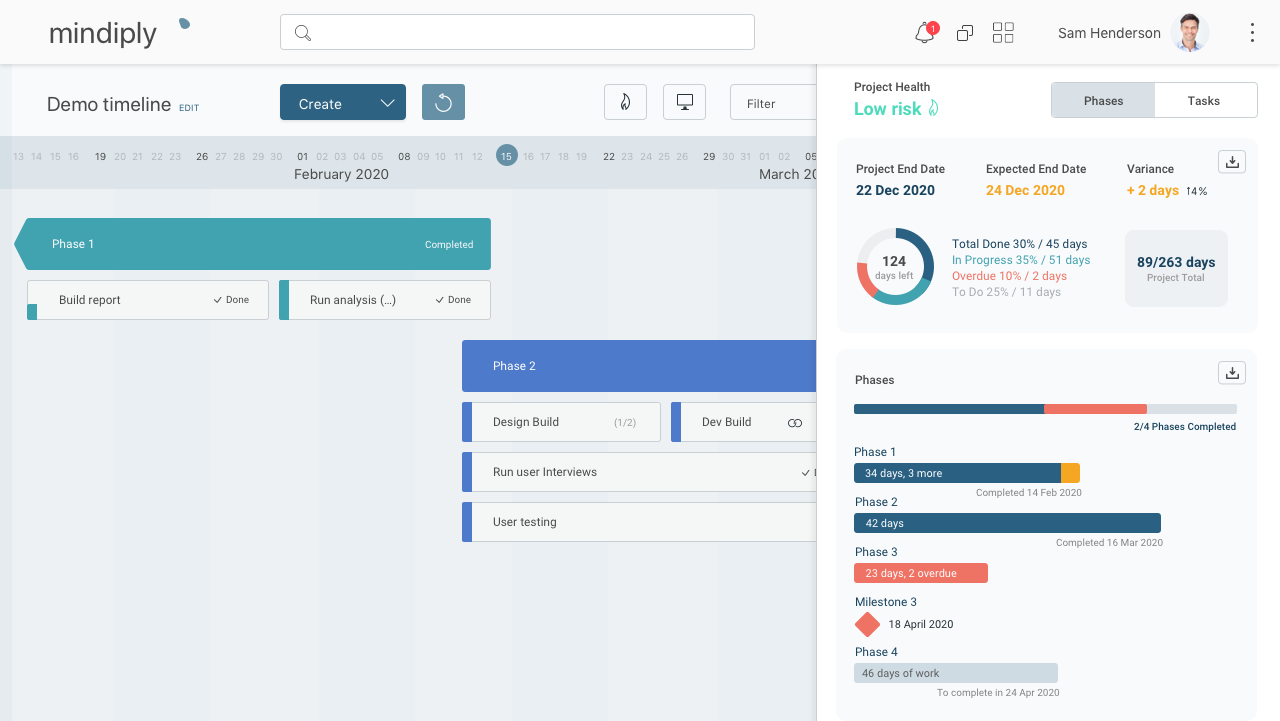
How to mix Waterfall and Agile in Project Management: The Envelope Method
Francesco Marcatto8 Jun 20
Let’s make it clear from the start: in the real world of Project Management, the fight between Waterfall vs. Agile makes no sense. Indeed, there is no “one single way” to manage a project, and expert PMs know that being able to assess the needs of a project and being able to adapt to those specific needs are exactly the makings of a great PM.
Thus, when it comes to the question “which one is better” (agile or waterfall), the answer can only be neither. It really depends on the framework of the project you are working on, deadlines, budget constraints, client interactions, and several other variables that would indicate which methodology would be best for that particular project.
In some cases, you would require a straightforward and rigid approach, so Waterfall Project Management is perfectly fine. Within this approach, you essentially pre-plan everything, create a logical progression of steps needed to be completed to achieve the goal, and then execute.
Once the plan is in motion, it becomes very difficult to change course because the way that Waterfall Project Management is set up means that for the project to move forward: every step has to be completed in a set period. This is great within a world of controlled variables. However, we all know that things can change very quickly. Just take 2020 as a prime example of “things going wrong unexpectedly”!
It might then seem that the best approach to deal with this variable of change is to be able to adapt to it. This is why many people these days joined “Team Agile” and swear that it is the only way to effectively manage a project.
This, of course, is not true. Agile does provide plenty of benefits in terms of being adaptable and usually takes far less planning to get started, but it heavily relies on client input and the lack of constraints can easily make a project go wrong (delays and scope creep anyone?).
But what happens when the client doesn’t have the time to interact with the project as much as Agile requires? Or what if they have a strict deadline or a fixed budget? How would an Agile model adapt?
Well, Agile and Waterfall can meet somewhere in the middle in what is known as “The Envelope Method”.
The Envelope Method – A Hybrid Approach
If neither a pure Agile nor a pure Waterfall method seems to be working – you could attempt the Envelope Method.
This method, developed by Joseph Flahiff in his 2011 paper “Integrating agile in a waterfall world”, in essence, merges the general structure of Waterfall with the nodal capacities of Agile. In other words, the overall project follows the structure and objectives of what would be laid out in Waterfall. After all, most projects have specific fixed elements such as budget, deadlines, and some common activities such as buying hardware and equipment, testing, etc.
With the Envelope Method, you consider these definite phases as the first tier of the project management approach. Within this first tier, the project manager would be making all the shots and try to maintain the delicate balance of the project by periodically doing an ecology check on the health of each phase.
However, if we go a level deeper, into tier 2, we enter into the Agile domain.
Agile within Waterfall
Once the overall structure has been established, dynamic nodal teams can be constructed following the Agile approach. This means that “underneath the hood” of the Waterfall method, we find smaller sub-pockets where the Agile approach rules.
This combination gives you the best of both worlds: a clear strong vision based on a definitive timeline, with the adaptability of Agile within specific sectors that require an Agile approach.
For example, working on a particular feature of the project that requires real-time updates would be best served with an Agile approach. And this specific feature will be part of the “deck of features” which, once completed, will be part of the Waterfall objective.
Thus, the sum of all the parts (Agile) makes the whole (Waterfall).
Within this mixed approach, the job of the Project Manager is to shield the Agile Teams from the rigidness of the Waterfall Structure, and therefore Agile Team Leaders are the ‘shot callers’ within this tier. They communicate with and update the Project Manager who works their effort into the grand scheme of things.
The Envelope is as good as your ability to delegate
Just a final word: the Envelope Method can only really be executed when the Project Manager has reliable people to delegate authority within the “pocket-Agile-phases”. The PM needs to be able to trust that Agile teams will be able to deliver according to the standards ascribed within the Waterfall planning, otherwise managing this project will be a nightmare.
If all of these elements are aligned, you can follow the Envelope Method, which many times is the best way to approach a project. When you’re presented with options A or B, sometimes it’s okay to mesh them together and create an option C which keeps the best of both worlds.
Mindiply Timeline: the online tool for Agile, Waterfall, or mixed-approach Project Management

Mindiply Timeline is the new online tool which will make planning, updating and reporting finally as easy as it should be. Developed with the help of many expert Agile and Waterfall Project Manangers, it will suit to your PM style, whatever it is. Want to try it right now? Here's a demo for you: https://mindiply.com/
Cover Picture by Freepik







